Robert Browne of Lilford
Robert Browne (1550-1633) is considered as 'The Father of the Pilgrims' and 'The Grandfather of the Nation' (USA). Robert Browne is important in American history since he acted on the idea of separation of Church from State, and was the person who effected the first step in American democracy. In particular, he was a prominent Elizabethan Separatist and the founder of the Brownists, a common designation for early Separatists from the Church of England before 1620. He was the first seceder from the Church of England, and the first to found a Church of his own on Congregational principles (namely the Church goers themselves electing their preacher), but ended up later in life returning to the Church of England.
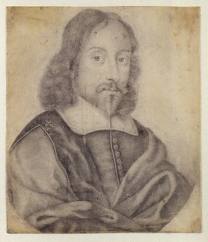 1550 Browne was born at Tolethorpe Hall in Rutland, England, part of a wealthy and very prominent Northamptonshire family, the Brownes (Elmes) of Lilford. Thomas Elmes (d1632) the head of the family and owner of the Manor of Lilford was his cousin, both being relations of the extremely wealthy Staple of Calais mayor William Browne of nearby Stamford.
1550 Browne was born at Tolethorpe Hall in Rutland, England, part of a wealthy and very prominent Northamptonshire family, the Brownes (Elmes) of Lilford. Thomas Elmes (d1632) the head of the family and owner of the Manor of Lilford was his cousin, both being relations of the extremely wealthy Staple of Calais mayor William Browne of nearby Stamford.
1570-3 Browne attended Cambridge University. He received a B.A. (1572) from Corpus Christi College (Cambridge). It was while Browne was at Corpus Christi, that he first met Robert Harrison. Harrison came from Norwich, and had matriculated as a pensioner of St John's College, Cambridge in October 1564. He transferred to Corpus Christi College, Cambridge and there received his B.A. (1567) and his M.A. (1572).
They were both influenced by the then current neo-Calvinist lectures of Thomas Cartwright (1535-1603), puritan theologian and professor of Cambridge University. Cambridge University during this period had a decidedly pro-puritan leaning in its philosophy and a new spirit for reform.
1575-8 Browne located in and around the greater London area after leaving Cambridge. In particular, he was known for his dissident preaching in the Parish of Islington (London).
Browne was starting to develop his own dissident views of the Church and its criticism of its bishops. Browne may have preferred a teaching career than taking his ordination which was not an uncommon practice. He is also reputed to have been a Master of Oundle School.
1578 During the later part of the year, Browne returned home to father’s home in Tolethorpe, but grew weary and returned to Cambridge University for more study. About this period, Browne came under the personal influence of Richard Greenham, puritan divine, and the rector of Dry Drayton Parish, near Cambridge. Browne may have been encouraged to complete his ordination requirements while under Greenham. Browne was encouraged into serving at a local parish church. Browne was offered a lecturer position at St Benet's Church adjacent to Corpus Christi College at Cambridge University possibly through the offices of the Reverend Greenham. Browne seems to have been too much of a firebrand for the congregation. His tenure there was rather short lived. Browne may have come to reject the puritan view of reform from within the Church, and started to look outside of the established Church.
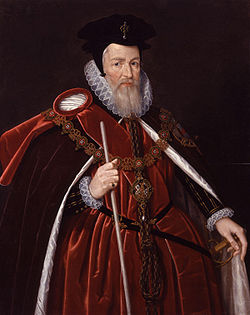 1579 Robert Browne soon became a self styled preacher in and about Cambridge. His brother had obtained preaching licenses for them both from the local Bishop, but Browne burned his in protest. By this time, he was openly criticizing the Church, its administration and leadership in Cambridge. He was arrested and jailed, but was soon released. The Browne family were related to the extremely wealthy Browne (Elmes) of Lilford family, and the Browne family were also kinsmen to the powerful Cecil family, i.e. William Cecil, Baron Burghley (1520-1598), Lord High Treasurer (1572-1598), and member of the Privy Council during the reign of Queen Elizabeth. Through these family relations, and with Lord Burghley holding pro-protestant leaning himself, Browne would often find special assistance in high places when need would arise. There are firm indications that Baron Burghley took a personal interest in the welfare of his young kinsman.
1579 Robert Browne soon became a self styled preacher in and about Cambridge. His brother had obtained preaching licenses for them both from the local Bishop, but Browne burned his in protest. By this time, he was openly criticizing the Church, its administration and leadership in Cambridge. He was arrested and jailed, but was soon released. The Browne family were related to the extremely wealthy Browne (Elmes) of Lilford family, and the Browne family were also kinsmen to the powerful Cecil family, i.e. William Cecil, Baron Burghley (1520-1598), Lord High Treasurer (1572-1598), and member of the Privy Council during the reign of Queen Elizabeth. Through these family relations, and with Lord Burghley holding pro-protestant leaning himself, Browne would often find special assistance in high places when need would arise. There are firm indications that Baron Burghley took a personal interest in the welfare of his young kinsman.
1579-80 During this period, Browne became ill possibly from the plague which was abroad in the land, and again returned to the father’s home in Tolethorpe. After his illness and convalescence at Lilford Hall, Robert Browne travelled to the Norwich area to see his friend Robert Harrison.
There is some information to suggest that Browne may have developed a relationship in Norwich with a former clergyman turned Separatist, Thomas Wosley (d. 1612). Wosley may have been an influence on Browne's and Harrison's thinking before 1582. Wosley continued his own separatist activities in the East Anglia area which usually found him in or out jail during the remainder of his life. Wosley may have later influenced yet another separatist Robert Barrow, leading later to the Barrowist movement.
Robert Harrison like Browne had tried his hand at being a schoolmaster rather than taking a position in the Church. Harrison's own dissident views soon found him without a job. Through Harrison's own personal relationships in Norwich, he was able to secure for himself the position of Master of the Great Hospital at Norwich, Saint Giles upto 1582.
Browne had become a Separatist in principle, since he rejected the established Church of England as unscriptural, and the puritan belief of reform from within as mute. He began to look outside the traditional norms, and had become interested in the Radical Reformation religious sects and their various tenets sometimes labelled as Anabaptists. Browne would find various aspects of these tenets of interest, and may have helped him in his own views on the Bible, and to formulate his own religious views. There may have been some cross fertilization between the early Separatists views and the growing Anabaptist influence in England after 1560.
There is some indication that Browne was drawn to the immigrant Dutch wool worker population living in the Norwich area and especially those with Anabaptist leanings. This may have been a major draw for Browne in developing his new theological tenets, and church membership.
1581 was an important year for Browne, who was now lodging with his old college friend Robert Harrison. Browne and Harrison set about establishing their own Separatist congregation at Norwich early in 1581. Norwich at this period was a major city, and with a large foreign resident Dutch population working in the local craft industries. Browne was a good preacher, and many came to hear his new message.
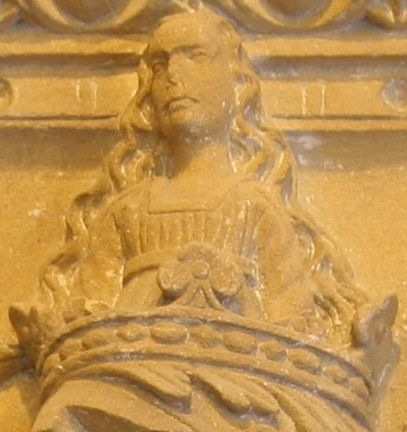
1582 A new congregation started in Norwich with Browne elected as pastor, and Harrison as the Teacher. Recent activity from the local church authorities may have prompted a decision by the congregation to move their Norwich congregation to Middelburgh in Zeeland, Holland. Browne and Harrison with most of their congregation in tow moved between May and August 1582. The residue of their original Norwich congregation may have continued in Norwich into the 17th century. Thomas Cartwright (1535-1603), puritan theologian, a former Cambridge don, and preacher of neo-Calvinism had already established his own congregation at Middelburgh, which may have helped influenced Browne's choice of location. Unfortunately for Cartwright, Browne was not of an agreeable disposition towards his new Calvinist neighbours, and attacked Cartwright and his views in writing. Browne gradually rejected many of the puritan religious tenets.
Members of the Browne and Harrison congregation had suffered from illness on arriving in Holland. Not long after establishing their new congregation, disagreements began to develop within the congregation. Problems also developed between Browne and Harrison and their respective immediate families.
Two of Browne's books were published at this time in Holland, namely A Booke which Sheweth the Life and Manners of all true Christians (1582) and his major work Treatise of Reformation (1582). Both books were quickly banned by the English authorities. The Treatise of Reformation called for immediate reforms to be enacted to the Church of England, and is also known as the Theory of Union. Such forms the conceptional basis for Congregational churches around the world. These churches claim their descent from the original Congregational churches, a family of Protestant denominations formed on this Theory of Union published by Robert Browne.
1583 The writings of Browne and Harrison started to be sold in England, and by the middle of 1583 a Proclamation was issued against the buying, selling or possession of the works of Robert Browne and Robert Harrison. John Copping and Elias Thacker who were former members of Browne's Norwich congregation, were arrested, tried, and hanged for selling Browne's and Harrison's seditious writings that same year. During this time, both Browne and Harrison the writers were free at large in Holland.
Harrison came to represent the major religious views within the congregation, and indeed Browne soon found himself voted out of his own congregation during 1583. The remaining Middelburgh congregation under Robert Harrison continued in place until the time of Harrison's early death ca. 1585.
1583-4 Browne with a small band of faithful followers sail to Scotland. He hoped to establish himself at Edinburgh in Canongate (Burgh) just outside the city walls near Holyrood Abbey. Browne was called before the city church authorities to explain his recent religious writings. Browne soon found himself under house arrest by the Church authorities and jailed.
Browne was released through the intervention of the local Civil authorities who were themselves not well disposed toward the Church authorities at this particular period, otherwise Browne may have remained under arrest for a long time. Browne took his leave of Edinburgh after being released.
Browne travelled about Scotland looking for new converts to his own message, however, Calvinist Scotland was not very receptive to Browne's new religious message. Browne graced a few more Scottish jails and prisons during his travels there. Despair, jail time and growing poor health probably drew Browne back to England.
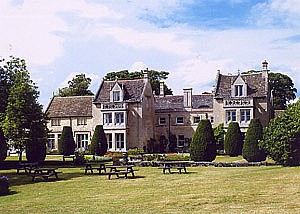 1584 Browne returned back to England during the summer of 1584 to the family homes of Tolethorpe Hall and Lilford Hall. He had started to write and publish books again. He was soon arrested and jailed. He was released again due to the financial clout of the Browne (Elmes) of Lilford family and the political assistance of Baron Burghley.
1584 Browne returned back to England during the summer of 1584 to the family homes of Tolethorpe Hall and Lilford Hall. He had started to write and publish books again. He was soon arrested and jailed. He was released again due to the financial clout of the Browne (Elmes) of Lilford family and the political assistance of Baron Burghley.
1585 Browne seems to have become very exhausted, and sick in body and spirit. The Bishop of London and the Archbishop of Canterbury wanted to question Browne concerning the unlawful distribution of his writings, i.e. the Proclamation of 1583. He was held, questioned and then released for lack of evidence.
1586 The Church authorities still wanted to keep a watchful eye on him, however, Browne was allowed to be transferred from jail to the family home of Lilford, where he slowly recovered his health. By early spring of 1586, he had recovered enough to begin to preach without license again. He was brought up on charges to appear before Bishop Howard of Peterborough for his illegal preaching and writings. He ignored the summons and failed to appear, and was soon excommunicated.
The excommunication itself may have been the catalysis for his change of attitude, since he moved for absolution in 1586. Browne may have preferred his own personal freedom in England, and this may have been more important to him than giving a half hearted recanting to the Church authorities of his own theological principles. The real reasons behind his actions may never be known for certain.
Browne was able to facilitate a reconciliation with the Church of England probably through the good offices of his kinsman, Lord Burghley. Browne agreed to conform to the rules and statutes of the Church of England, abide by his regular attendance at his designated parish church, and some type of official recanting of this previous beliefs and writings.
1586 In return for this recanting, Browne was offered the position of Headmaster of St. Olaves Grammar School in Southwark. Browne duly returned to his former profession and school in Southwark, however there are some indications to suggest that Browne may have had some actual backsliding during this period. Intriguingly, a Brownist conventicle was discovered near Southwark (London) in October 1587, its pastor and members of the congregation were arrested. Its membership included former members of Brownes' Middelburgh (Holland) congregation (1583-85). This independent congregation was under the leadership of the Reverend John Greenwood (d.1593) a former puritan clergyman. There is no direct evidence to link Browne to this particular congregation, indeed Greenwood became associated with Henry Barrow (1550-1593), and the start of the Barrowist movement, a more radical form of Brownist polity. From 1588 to 1591, Browne then became Headmaster of Stamford Grammer School during which time he was finally transformed from a rebel to conformity.
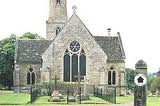 1591-1633 After Southwark, Browne was offered by his cousin Thomas Elmes of Lilford (d1632), the benefice of the parish church of Achurch cum Thorpe (Diocese of Peterborough) which he served on and off from September 1591 upto 1633. The parish of Achurch cum Thorpe is next to the parish of Lilford in Northamptonshire, where his first cousin Thomas Elmes lived, and who had repeatedly helped Browne out of trouble with the establishment in the past, since Browne was jailed 32 different times during his life. Whislt rector at Achurch cum Thorpe he lived at Achurch Rectory upto 1615, and Browne had by this time remarried, and utimately had 3 sons and 3 daughters.
1591-1633 After Southwark, Browne was offered by his cousin Thomas Elmes of Lilford (d1632), the benefice of the parish church of Achurch cum Thorpe (Diocese of Peterborough) which he served on and off from September 1591 upto 1633. The parish of Achurch cum Thorpe is next to the parish of Lilford in Northamptonshire, where his first cousin Thomas Elmes lived, and who had repeatedly helped Browne out of trouble with the establishment in the past, since Browne was jailed 32 different times during his life. Whislt rector at Achurch cum Thorpe he lived at Achurch Rectory upto 1615, and Browne had by this time remarried, and utimately had 3 sons and 3 daughters.
Browne's term of rectorship at Achurch cum Thorpe was filled with various gaps, the largest between 1615 and 1626 when Browne lapsed or reverted back to some of his earlier dissident habits. During this time he lived with his Elmes relatives at nearby Lilford Hall, and conducted certain duties at Lilford Church.
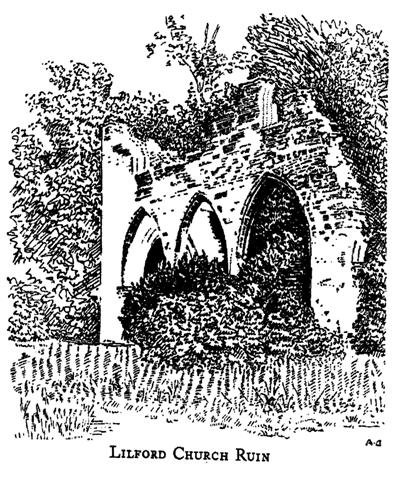 1626-1633 Browne resumes his duties as rector at Achurch cum Thorpe. There are some indications to suggest that Browne may have had some even more backsliding on his dissident views during the period 1618 upto his death preaching non conformist views at The Chapel in nearby Thorpe Waterville.
1626-1633 Browne resumes his duties as rector at Achurch cum Thorpe. There are some indications to suggest that Browne may have had some even more backsliding on his dissident views during the period 1618 upto his death preaching non conformist views at The Chapel in nearby Thorpe Waterville.
1632 Thomas Elmes his cousin and benefactor dies, and Browne then seems to have fallen on hard financial time in his last couple of years of his life, living and preaching at The Chapel until his last arrest in 1633.
1633 Browne became envolved in a dispute with the constable of the Lilford estate, his own godson, relative the payment of rates, which proceeded to blows. Later whilst awaiting charges for allegedly striking the constable, Browne was arrested and was so insolent to the justice during his trial that he was put in gaol. He subsequently became ill, and died in Northampton Jail.
1633 Robert Browne dies at the ripe old age of 83, and is buried in the graveyard of St. Giles Church in Northampton.
Comments on Robert Browne
Robert Browne saw the Church of England as being in a state of moral disrepair and catholicism. Rather than reforming the Church from within, Browne sought out a new "true church" ethic. He advocated an early church polity which would later be known as congregationalism. He was one of the first to advocate religious separation from the Church of England, and the first to actually set up a Separatist Church. Browne was in fact only an active Separatist from 1579-1585.
Browne has been actively criticized by those who came after for recanting his principles and giving in to the Establishment for his own personal liberty. This did not stop the influence of his writings or the spread of Brownist congregationalism and theology. Browne and his writings were major contributions in the early development of Elizabethan English religious dissent, and the beginnings of the English Separatist movement during the later reign of Elizabeth I. His light may have shown only briefly, but he lighted the path for others to follow including some with other more radical points of view.
In particular, his beliefs led to the Congregational church movement (click here for more information), which are Protestant Christian churches practicing Congregationalist church governance, in which each congregation independently and autonomously runs its own affairs. All Congregational churches claim their descent from the original Congregational church based on the Brownist movement, a family of Protestant denominations formed on a theory of union published by Robert Browne in 1582. They arose from the Nonconformist religious movement in England during the Puritan reformation of the Church of England.
Many English dissidents would set sail for America (including the Pilgrim Fathers-click here for more information) and establish congregations along the lines of basic Brownist theology. Later generations were usually referred to as Congregational. Browne has often been called “The Father of Congregationalism”, “The Father of the Pilgrims” and “ Grandfather of The Nation” (USA).
